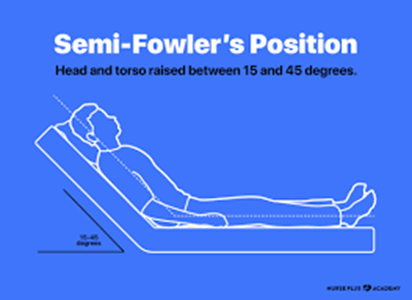A nurse applies padded boots to maintain the foot in dorsiflexion to a client who is comatose. The nurse is protecting the client from:
decubitus ulcers.
foot drop.
pooling of blood.
blood pressure changes.
The Correct Answer is B
Choice A rationale: Decubitus ulcers (pressure ulcers) are not directly prevented by applying padded boots for dorsiflexion.
Choice B rationale: Applying padded boots for dorsiflexion helps prevent foot drop, a condition where the foot is permanently in a plantar-flexed position, which can lead to contractures.
Choice C rationale: Pooling of blood is not a primary concern addressed by applying padded boots for dorsiflexion.
Choice D rationale: Blood pressure changes are not directly addressed by applying padded boots for dorsiflexion.
Nursing Test Bank
Naxlex Comprehensive Predictor Exams
Related Questions
Correct Answer is D
Explanation
Choice A rationale: Removing excess drainage and wet tissue to prevent maceration is more related to wound care than debridement.
Choice B rationale: Stimulating the wound bed to promote the growth of granulation tissue is a goal of debridement.
Choice C rationale: Removing purulent drainage from the wound bed is more related to wound care than debridement.
Choice D rationale: The primary goal of debridement is to remove dead or infected tissue to promote wound healing and create an environment conducive to tissue regeneration.
Correct Answer is B
Explanation
Choice A rationale: Protective supine positioning is not ideal for managing dysphagia or facilitating swallowing.
Choice B rationale: Semi-Fowlers positioning, with the head of the bed elevated at a 30 to 45-degree angle, is often recommended for clients with dysphagia. This position helps prevent aspiration during eating and promotes effective swallowing.
Choice C rationale: Low-Fowlers and Fowlers positions may not be as effective in preventing aspiration during eating as the Semi-Fowlers position.
Choice D rationale: Fowlers positioning alone may not be sufficient for managing dysphagia; Semi-Fowlers is a more specific recommendation.

Whether you are a student looking to ace your exams or a practicing nurse seeking to enhance your expertise , our nursing education contents will empower you with the confidence and competence to make a difference in the lives of patients and become a respected leader in the healthcare field.
Visit Naxlex, invest in your future and unlock endless possibilities with our unparalleled nursing education contents today
Report Wrong Answer on the Current Question
Do you disagree with the answer? If yes, what is your expected answer? Explain.
Kindly be descriptive with the issue you are facing.
